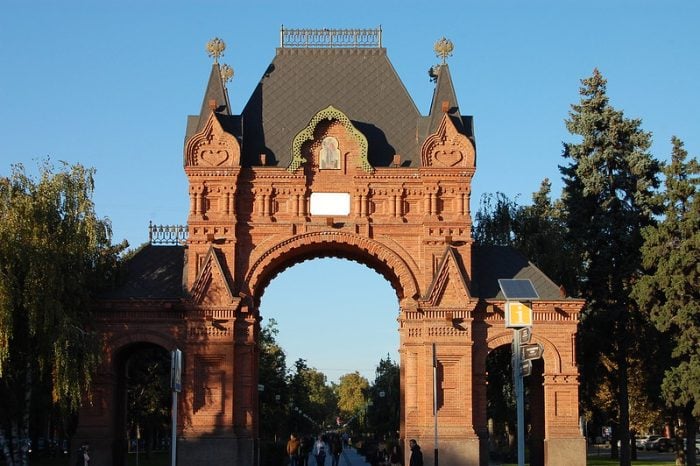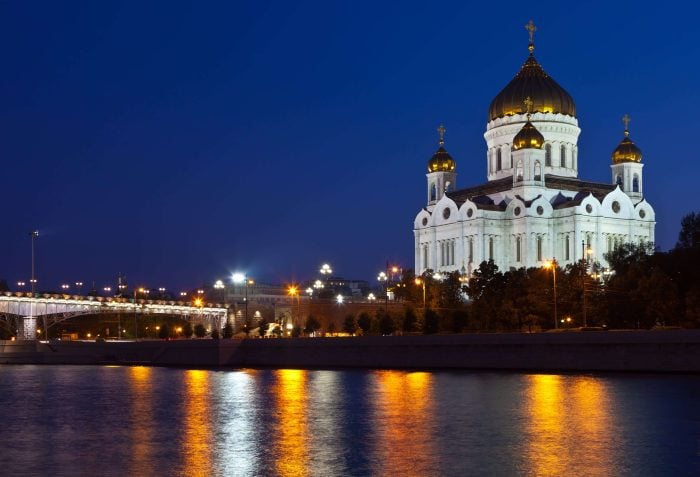Russian Dialects: Which One Should I Learn?
Those who have attempted to learn Russian don’t need us to warn them about how difficult it can be. With an unfamiliar writing system and complex grammatical structures, Russian is a very challenging language indeed.
However, there is one thing about Russian that should put your mind at ease. Considering how huge Russia is, the Russian language is surprisingly homogeneous, with only small variations across its dialects.
This means that no matter which variety you learn, you will be able to understand all dialects with little difficulty.
→Sign Up Now: Free Trial Russian Lesson With a Native Speaker Teacher!←
Below, we will help you familiarize yourself with the slight differences between Russian dialects so you can be ready for the moment when you meet a native Russian speaker in person.
Table of Contents
Russian Dialects in Russia
Northern Russian Dialect (Северный говор)
Southern Russian Dialect (Южный говор)
Central Russian Dialect (Среднерусский говор)
The Belarusian Language: A Russian Dialect?
Ukrainian: One of the Russian Dialects or a Language of Its Own?
How Similar Are Ukrainian and Russian?
What Are the Most Common Russian Dialects?
Russian Dialects in Russia
Before we delve into Russian dialects and their main features, let’s get a crucial question out of the way.
What is a dialect?
Dialects are basically subsets of a language that have their own special vocabulary and different grammatical features.
For example, Australian people commonly greet each other by saying “G’day mate, how ya going?” If you’re not familiar with Australian English, this greeting can be confusing. You might find yourself saying something like “I’m going by car. No, I’m going on foot. Actually, I’m not going anywhere”.
With this silly example, we want to illustrate how important it is to get familiar with dialectal differences when learning a new language.
If you want to learn Russian, the first thing you’ll need to know is that there are three main Russian dialects —Northern, Southern and Central.
Northern Russian Dialect (Северный говор)
Northern Russian is spoken north of Moscow and in a few districts such as Nizhny, St. Petersburg, Siberia and the Far East.
Once you are fluent in Russian, the Northern dialect is easy to recognize due to how speakers tend to make their Os long and pronounced, a tendency known as оканье (okanie).
Next time you travel to St. Petersburg, pay attention to the way Northerners say words like много (many). You’ll notice that they pronounce the two Os as if they were thinking what to say next.
Another noticeable characteristic that sets the Northern dialect apart is the pronunciation of Ч (ch) as Ц (ts). For example, the word Печка (stove), which is normally said with a “ch”, sounds more like “petska” when said by a Northener.
Northern Russian dialects tend to preserve many archaic words and expressions that dropped out of use in other varieties. Besides these ancient words, Northern Russian also has approximately 200 words of Uralic origin.
Southern Russian Dialect (Южный говор)
The Southern Dialect is spoken around Ryazan, Oryol, Tula, Tambov, Lipestk, and most of Voronezh and Kursk Oblasts. You can also find speakers of this variety in the western part of Saratov and the southern part of Penza.
So, what sets Southern Russian apart from other dialects?
One of the most noticeable characteristics of the southern variety is the gekanie, which refers to how the G sound is pronounced in this particular variety.
When G appears at the beginning of a word or before A, E or I, it sounds more like a strong K than a G. So, when a Southerner says snega (snow), you will hear snekha.
The interesting thing about Southern Russian is that the further south you go, the more noticeable this feature gets. In places like Krasnodar, you will hear khorod instead of gorod almost every time. And even further south, in Ukraine, the gekanie is the norm rather than a dialectal variation.

Photo of Krasnodar, by Anna Novikova via Flickr
Central Russian Dialect (Среднерусский говор)
It’s difficult to say what Russian dialects belong in this group, as it basically consists of Northern dialects that have received the influence of Southern varieties or vice versa.
In other words, the central dialect is the one that bridges the gap between the Northern and Southern varieties.
It’s no surprise then, that the official, most recognizable version of the Russian language corresponds to this category. It’s the one you would hear in Moscow and most major cities, which makes it the “default” or “standard” variety of Russian.
The most noticeable characteristic of Central Russian pronunciation is its use of аканье (akanie), a sound change that occurs in Slavic languages. Thanks to this phenomenon, the sounds O and E come closer to an A when they are unstressed. For example, много (many) is pronounced многa in the Moscow and some of the surrounding areas, but not in other Russian dialects.
The Belarusian Language: A Russian Dialect?
Belarusian is, along with Russian, one of the two official languages in the Republic of Belarus. It can also be heard in some parts of Russia, Ukraine, Lithuania, and Poland by minority Belarusian communities.
For many years, the governments of Belarus implemented policies that favoured the Russian language and, as a result, Belarusian is not as widely used in education and public life as Russian.
Belarusian is often described as an in-between language that features characteristics of both Ukrainian and Russian. If we were to do an extensive trip across the country, you would be able to see why. As you get close to the borders that separate Belarus from these other countries, you will notice how Belarusian starts to gradually blend into Russian or Ukrainian.
As it happens with Russian, it is the central dialects that constitute the basis for Standard Belarusian. As regards its grammar, Belarusian can give you quite a headache, since it relies heavily on inflections, which is very similar to what happens in Russian.
Belarusian spelling, on the other hand, differs significantly from that of Russian. While Russian orthography represents the original form of words, Belarusian tends to write words as they sound.
For example, as we mentioned above, the A and O sounds merged into A throughout the years. While Belarusian always represents these merged vowels as A—the way it currently sounds—, Russian uses either A or O, depending on the original spelling.
Example:
Belarusian: прадукты (pronounced “pradukty”)
Russian: продукты (pronounced “pradukty”)
The great thing about these languages being so similar is that, if you learn Russian, you will definitely be able to understand Belarusian.
Ukrainian: One of the Russian Dialects or a Language of Its Own?
Ukrainian, originally called Ruthenian, is an East Slavic language spoken in Ukraine as well as in minority communities in places like Poland, Lithuania, and Slovakia.
Ukrainian is a direct descendant of the spoken language used in Kievan Rus until the 13th century. Its writing system is an adaptation of the Cyrillic alphabet and it closely resembles both Russian and Belarusian, with which it is mutually intelligible.
It wasn’t until the fall of Kievan Rus in the 13th century that the dialectal features that set Ukrainian apart from Russian and Belarusian emerged in full form. However, as a result of Ukraine’s long-lasting political subjection, Ukrainian didn’t have a literary expression until the 18th century.
How Similar Are Ukrainian and Russian?
Ukrainian is definitely similar to the Russian dialects mentioned above. First, both of their alphabets have 33 letters. However, Russian has the letters Ээ, ъ, ы and Ёё, which are not used in Ukrainian. In contrast, Ukrainian has Ґґ, Іі, Єє and Її.
Then, there are a few differences in pronunciation. In Russian, И in is realized like “ee” in the words “meek” or “feet”. Instead, Ukrainian speakers pronounce the “И” like a short I, as in “pick” or “tin.”
What’s more, some words are written the same way in both languages but mean completely different things. For instance, приклад means “rifle butt” in Russian and “example” in Ukrainian.
Despite these differences, once you learn Russian, you should be able to get the gist of Ukrainian as well.
What Are the Most Common Russian Dialects?
So, you want to learn Russian but you don’t know what dialect you should focus on?
Let us give you a tip.
Since the official or standard Russian variety corresponds to the Central dialects, this is the form of Russian that you will usually hear in the media. It’s also the variety taught at language schools. Being a bridge dialect between the Northern and Southern variety, it’s also the easiest to learn!
→Sign Up Now: Free Trial Russian Lesson With a Native Speaker Teacher!←
Do you want to delve deeper into Russian dialects and the slight differences that will help you tell them apart? The best way to do this is with the help of a trained native Russian teacher! They will be able to go in-depth into this topic and give you real examples from their own experience, as well as clear up any other doubts you may have about Russian. You can contact us now and we’ll pair you up with a native Russian teacher for a free trial lesson!



